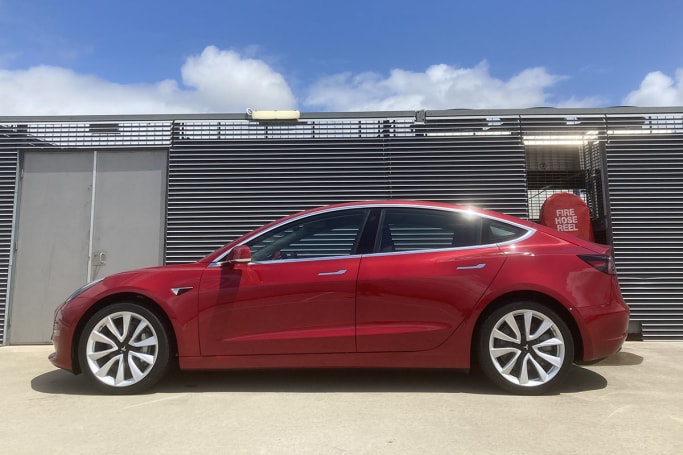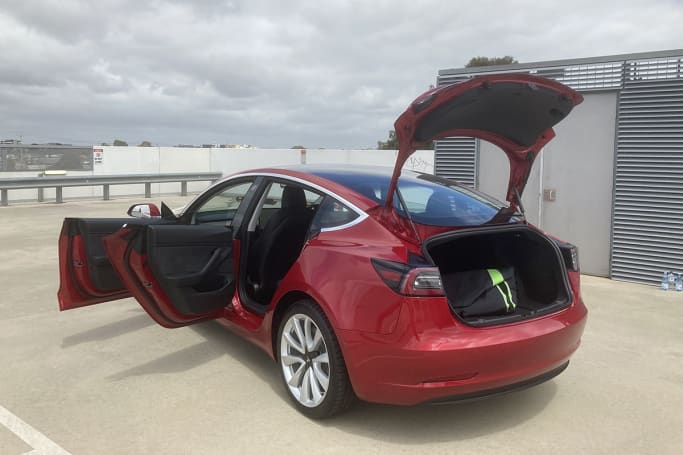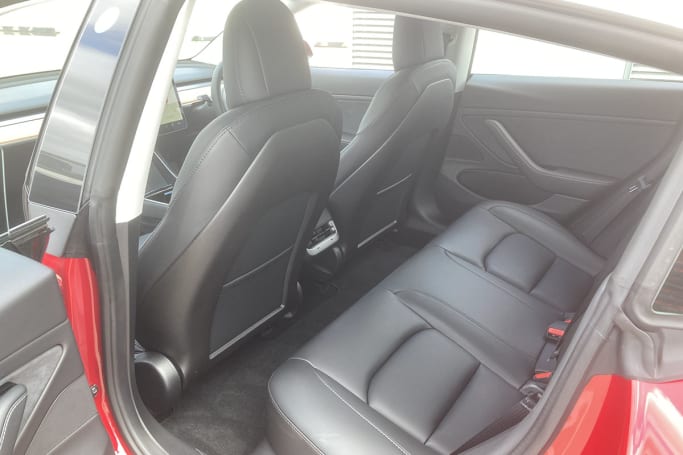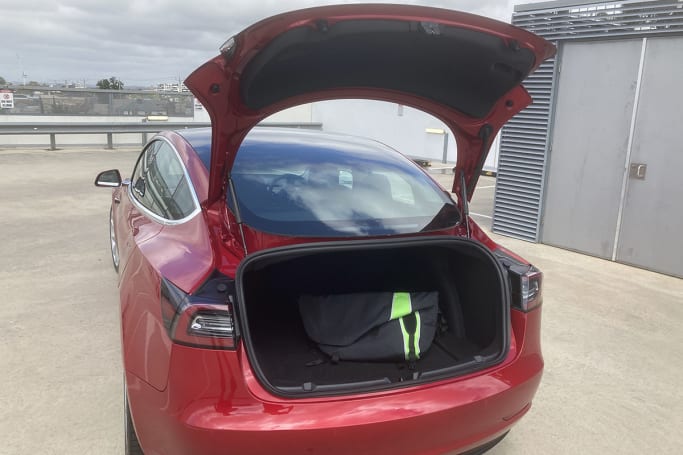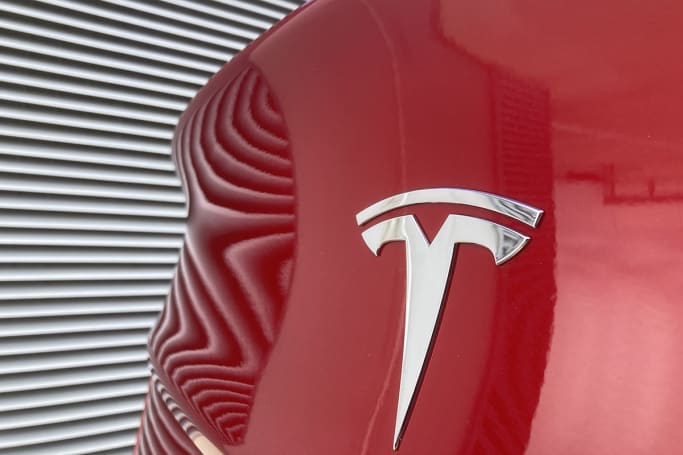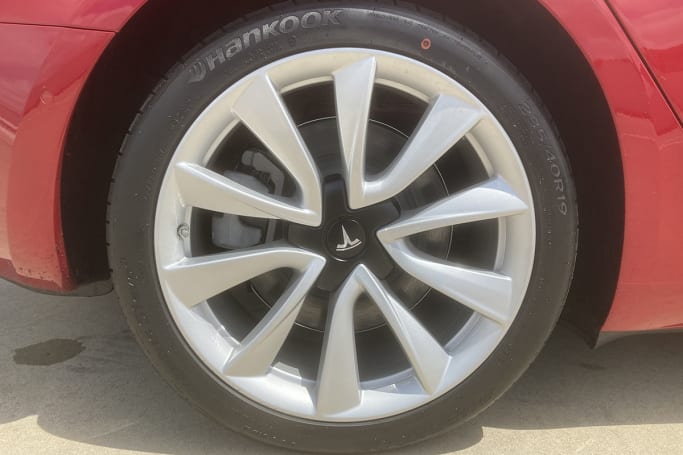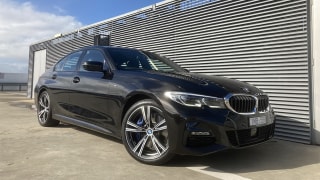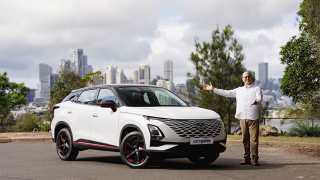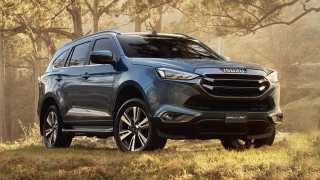Confession time. At the time of testing (December 2020), our Model 3 Long Range was the MY20; the MY21 update hadn’t yet reached us.
Besides being nearly $8K cheaper, chief among the changes is a heat pump heater/ventilation/air-conditioner (HVAC) system, which draws dramatically less energy from the batteries and so – combined with the upgraded tyres and improved powertrain and software – boosts efficiency as well as that all-important range.
As the dual-motor Long Range name suggests, the 3 can now travel 657km between charges (according to the optimistic NEDC figures), making this EV an even greater everyday proposition, though our MY20’s 620km rating is nothing to scoff at. How we managed, with two occupants, HVAC blaring and driving like it was stolen, we’ll reveal later on.
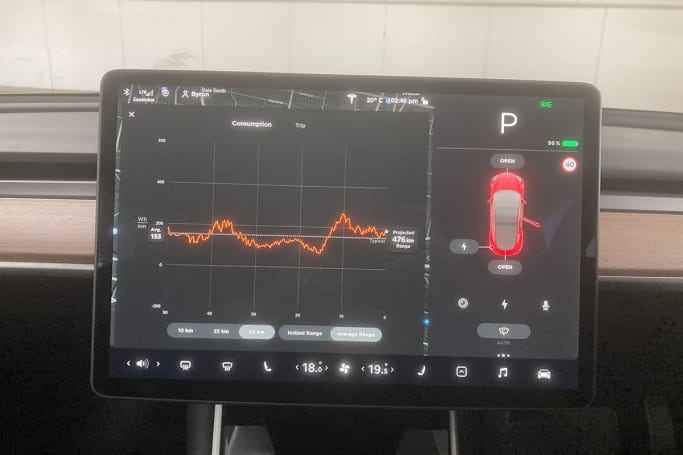
Other MY21 updates, by the way, include satin black instead of chrome for various brightwork and doorhandles, the bootlid is now power actuated, the vast centre console’s armrest/lid now slides, a pair of wireless smartphone chargers and extra USB-A and new USB-C outlets debut, metal replaces plastic for the steering wheel scroll wheels and magnetic sunvisors are fitted, among other minor amendments.
The 3’s specification is hardly generous, however. You’ll find ‘vegan leather’ upholstery, powered and heated front seats, heated/electrically folding mirrors and climate control. The latter two, along with all communications and navigation, must be accessed through a 15-inch tablet-style touchscreen, and the GPS is via Google. Although an analogue radio is fitted, there is no digital radio, while all other audio relies on a sim or smartphone. A (quality) 15-speaker system with subwoofer is included, as is a fixed glass roof.
In-car internet provides over-the-air updates for drivability, performance and functionality as they become available is fitted, negating the need to visit a dealer.
Note that the vaunted ‘Autopilot’ semi-autonomous driving system is now standard. It enables adaptive cruise control with driver-supervised assisted steering, acceleration and full stop/go braking capabilities, to mitigate collision with other vehicles and pedestrians.
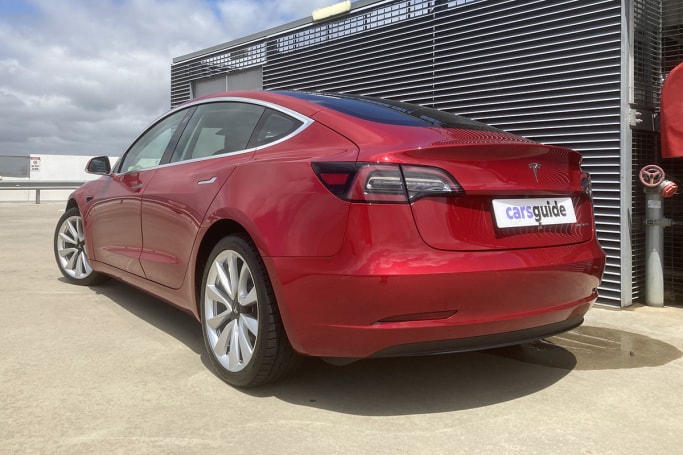
Interestingly, Autopilot is ready for full auto self-drive capability, but disconnected for Australia as per current legislation. That can be reversed at a flick of a switch back at Tesla HQ if/when laws change. This is another example of Elon Musk’s claim that it’s a technology company, not a traditional carmaker.
On the subject of safety, eight surround-view cameras and a dozen sensors see and detect surrounding objects. They work with front radar for what the company says is a 360-degree monitoring taking in most adverse weather conditions. Aiding this are low-speed (with pedestrian avoidance) and high-speed autonomous emergency braking (AEB), forward collision warning, lane departure alert with active steering-assist and keep, blind-spot sensors and front/side/rear parking sensors. Front, head and side airbags for all outboard occupants are also provided.
Pearl White is standard, Solid Black, Midnight Silver and Deep Blue add $1500 while ‘Red Multi-Coat Red’ as per the test car is $2900.
If it sounds like we’re avoiding answering the ‘value for money’ question, it’s complicated. There currently isn’t any car – let alone an EV – like the Model 3 offering this sort of shape, speed, dynamics, range, packaging or zero tailpipe emissions.

Yes, a Hyundai Kona Electric from $60,740 achieves the last two objectives and with a roomier body to boot, but it looks too much like a sub-$25K Kona Go inside and out, cannot hit 100km/h in 4.4 seconds and is 100km shy of the 3’s 557km range.
Conversely, while any number of ICE-powered medium-sized luxury-performance sedans like our favourite – the BMW 3 Series – offer more kit for less, the plug-in hybrid electric 330e version that costs similar money to the Tesla from $82,900 can barely manage 50km of pure EV range and needs another 1.5s to 100km/h and the M340i rocket with AWD is $110K plus.
You can consult the intriguing Volvo S60 T8 PHEV AWD to challenge the Long Range’s style, space, pace, practicality and price, but it’s still heavily dependent on its ICE to go the distance, while in the pure EV sphere, only big-brother Model S obliges at close to $150K.
In other words, there’s utterly nothing at all like a Tesla Model 3 right now. What value do you place on uniqueness?




